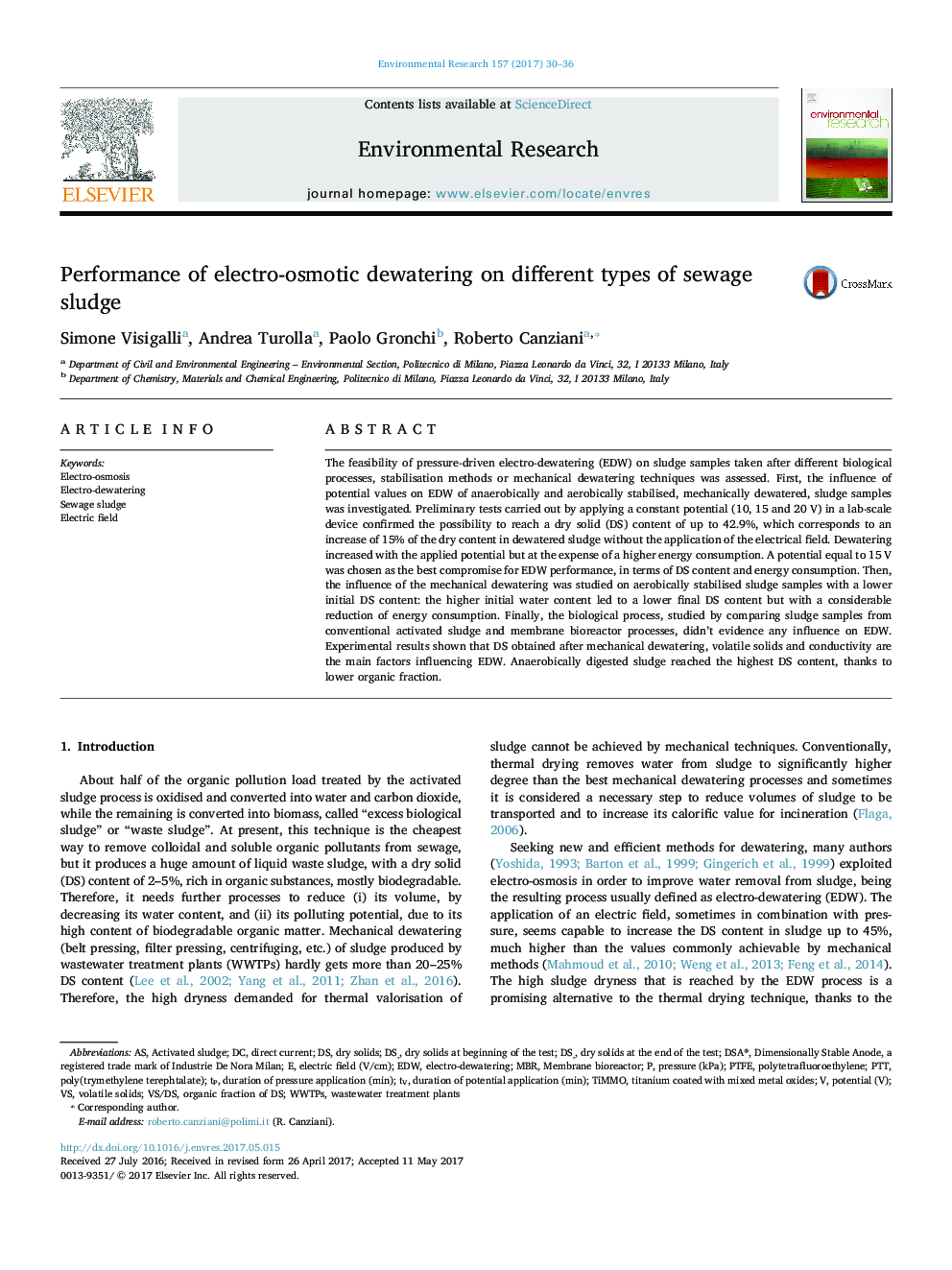| Article ID | Journal | Published Year | Pages | File Type |
|---|---|---|---|---|
| 5756286 | Environmental Research | 2017 | 7 Pages |
Abstract
The feasibility of pressure-driven electro-dewatering (EDW) on sludge samples taken after different biological processes, stabilisation methods or mechanical dewatering techniques was assessed. First, the influence of potential values on EDW of anaerobically and aerobically stabilised, mechanically dewatered, sludge samples was investigated. Preliminary tests carried out by applying a constant potential (10, 15 and 20Â V) in a lab-scale device confirmed the possibility to reach a dry solid (DS) content of up to 42.9%, which corresponds to an increase of 15% of the dry content in dewatered sludge without the application of the electrical field. Dewatering increased with the applied potential but at the expense of a higher energy consumption. A potential equal to 15Â V was chosen as the best compromise for EDW performance, in terms of DS content and energy consumption. Then, the influence of the mechanical dewatering was studied on aerobically stabilised sludge samples with a lower initial DS content: the higher initial water content led to a lower final DS content but with a considerable reduction of energy consumption. Finally, the biological process, studied by comparing sludge samples from conventional activated sludge and membrane bioreactor processes, didn't evidence any influence on EDW. Experimental results shown that DS obtained after mechanical dewatering, volatile solids and conductivity are the main factors influencing EDW. Anaerobically digested sludge reached the highest DS content, thanks to lower organic fraction.
Keywords
Related Topics
Life Sciences
Environmental Science
Health, Toxicology and Mutagenesis
Authors
Simone Visigalli, Andrea Turolla, Paolo Gronchi, Roberto Canziani,
